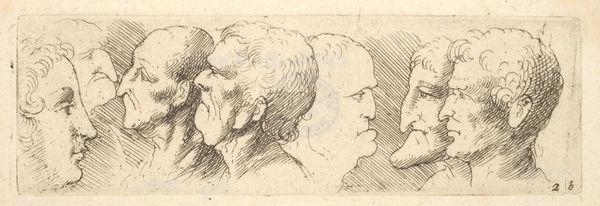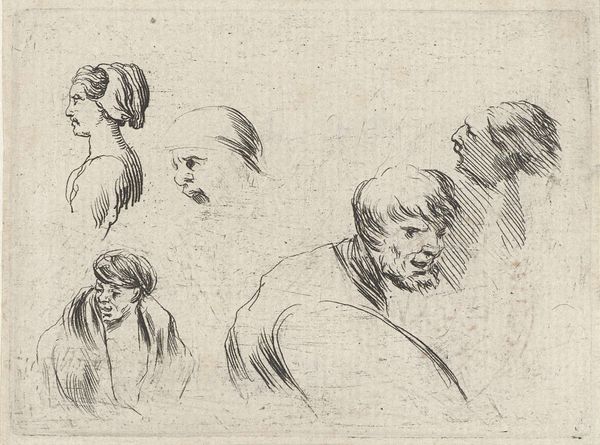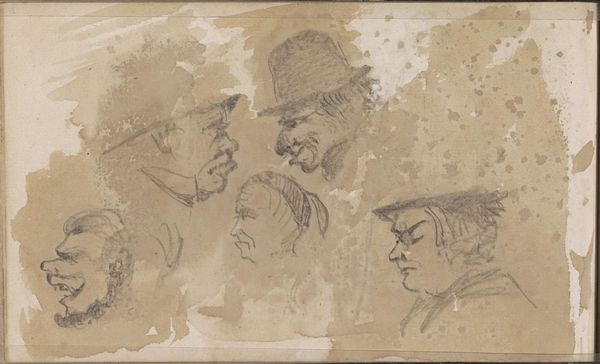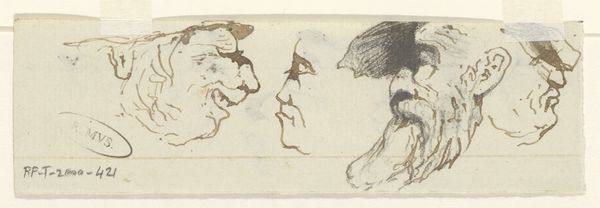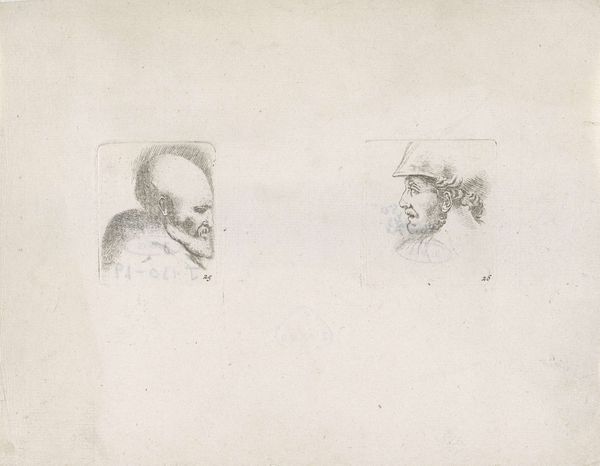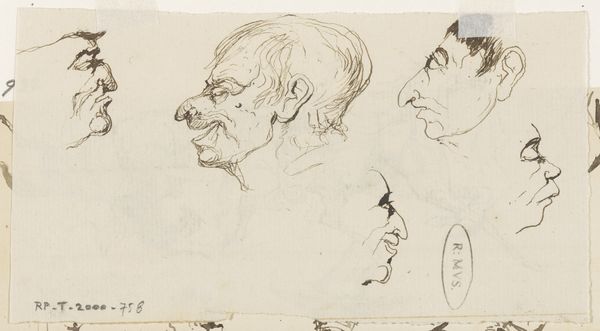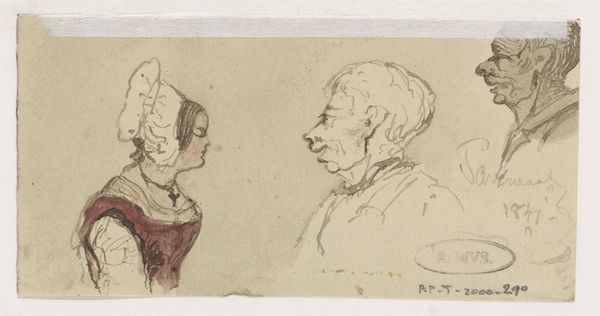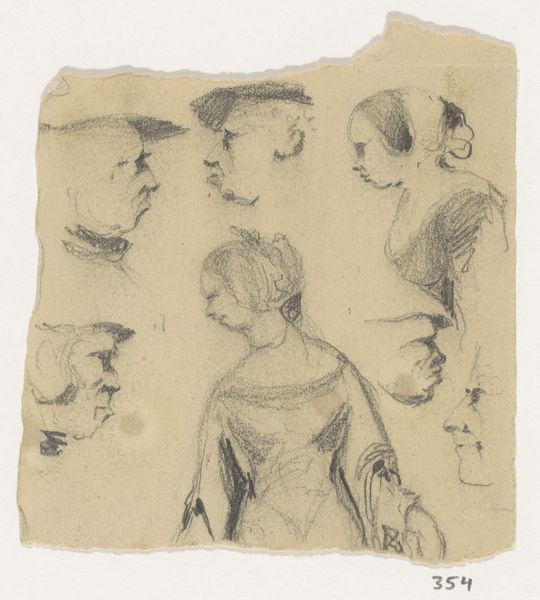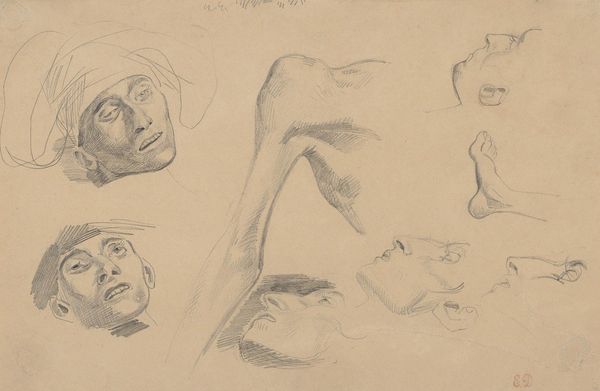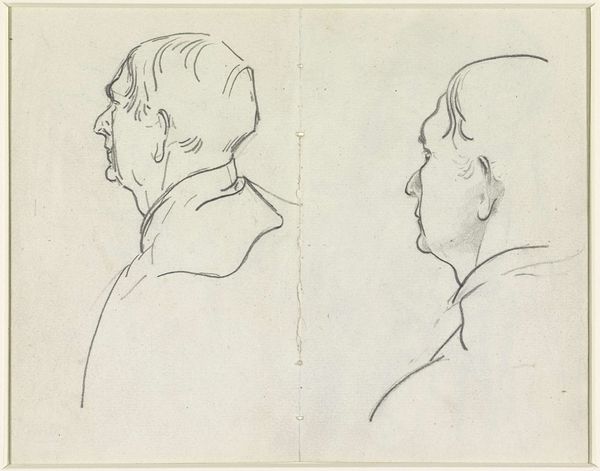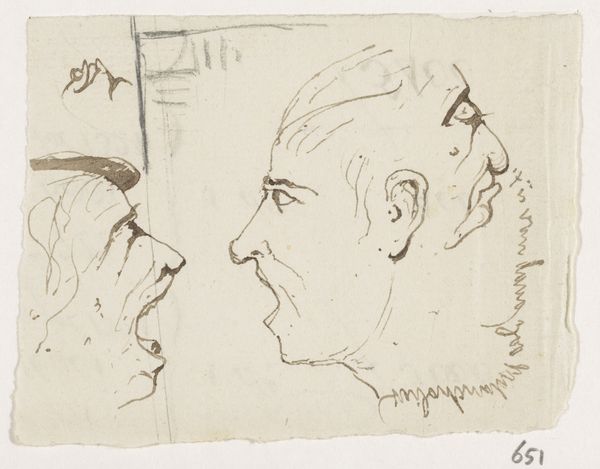
drawing, pencil
#
portrait
#
drawing
#
pencil sketch
#
figuration
#
pencil
#
realism
Dimensions: height 131 mm, width 205 mm
Copyright: Rijks Museum: Open Domain
Curator: At first glance, it gives the impression of a court room, the defendant flanked by the observing crowd. What a bleak and dehumanizing experience to face. Editor: You’re right; there is something cold about this. Here we have Jac van Looij's "Reeks koppen van publiek", or "Row of Heads of the Audience," which he created at some point between 1865 and 1930, using a simple pencil on paper. It is quite remarkable in its capacity to simultaneously highlight the individual while contributing to a group portrait. Curator: Absolutely. And for me, this composition begs us to question who gets to look and who is being looked at? Consider, perhaps, these 'heads of the audience' are actively complicit in oppressive systems simply by occupying these seats. Editor: From a symbolic perspective, notice the contrast between the individual to the far left, in the dark, and the row of faces illuminated in the light. Light has long been used as a signifier of knowledge and rationality, as opposed to the shadowy individual—further creating a separation between those on display and those judging from the seats of power. Curator: The way the figures blend into one another speaks volumes too. Is this blurring an intentional commentary on the lack of individuality and the pressures of conformity within this… assembly? Editor: Yes, it certainly creates a visual representation of a collective entity. And it calls to mind historical precedents as well, I am reminded of Daumier's depictions of crowds, also frequently imbued with political undertones, often challenging dominant social structures through carefully coded symbols. Curator: I would say, though, van Looij seems less focused on overt political satire than on the subtle mechanisms of observation and judgement itself. The partial erasure of certain figures adds a spectral quality—suggesting that power is enacted not only by who is physically present but by those absent too, perhaps an indictment of absent lawmakers. Editor: An incredibly relevant point! This drawing becomes a mirror, reflecting the viewers’ own gaze and how we position ourselves within systems of power. Thank you. Curator: A truly valuable, insightful exchange that offers much needed context.
Comments
No comments
Be the first to comment and join the conversation on the ultimate creative platform.
